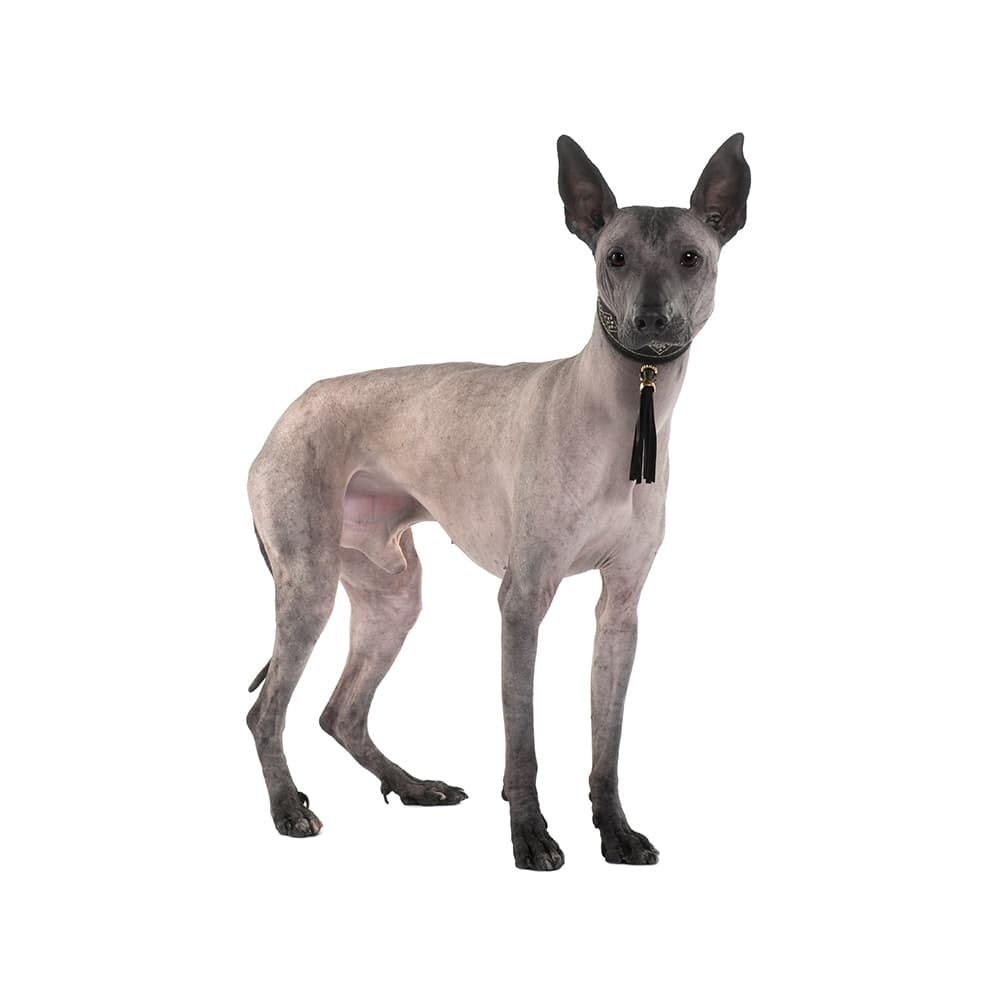Discover your dog's connection to this breed and 200+ others


Discover your dog's connection to this breed and 200+ others



The Peruvian Hairless Dog, also known as the Peruvian Inca Orchid or Viringo, is one of the oldest dog breeds, dating back to pre-Inca times. The breed's exact origin is unclear, but artifacts and pottery from ancient Peruvian cultures, including the Moche, Chimu, and Vicus, depict dogs similar in appearance to the Peruvian Hairless, which suggests its existence as far back as 750 AD. The breed was almost lost during Spanish colonization, but survived in rural areas. It was officially recognized by the Fédération Cynologique Internationale in 1985.
Peruvian Hairless Dogs are known to be generally healthy dogs, but as a larger breed they are at risk for developing orthopedic problems, such as hip and elbow dysplasia. They can also be prone to inflammatory bowel disease (IBD) and may suffer from epilepsy. Genetic testing is recommended, including for the following specific conditions: hyperuricosoria, degenerative myelopathy, and progressive rod-cone degeneration. As a Sighthound breed, they are known to be more sensitive to barbiturate anesthetics. Thiopental, or any other thiobarbiturate, should not be used on these dogs.
Peruvian Hairless are alert and lively dogs. These dogs are known to be affectionate, loyal, and intelligent. They tend to be friendly with their family members but can be wary of strangers. They are loyal and protective of their family unit. They are typically quiet and calm indoors but are also agile and athletic, enjoying outdoor activities and also doing well in agility, obedience, and rally sports. These dogs are generally good with older children and can get along well with other dogs, particularly when socialized from an early age.
Being hairless, these dogs are at risk for sunburn, skin cancer, and other skin conditions. The breed also has a higher than average occurrence of missing teeth (a trait associated with the hairless gene), which can cause difficulties with eating.
A canine genetic lineage is a group of individuals or entire breeds that descended from common ancestors predating modern breed formation. Often these lineages are associated with a ‘type’ of dog with a unique historical working role and associated behaviors (e.g., herding, scent hunting, etc.).
Breeds within the toy dog lineage were developed to be companion animals. They originated as lap dogs for royalty, nobility, and affluent individuals, and typically weigh less than 15 pounds. Breeds within the toy dog lineage were bred to be friendly and sociable, playful, and energetic while also having a heightened awareness of their environment.
Example breeds with ancestry from this lineage include Chihuahua, Maltese, and Shih Tzu.
Despite being called the Peruvian Hairless Dog, approximately 10-20% of the breed are born with a full coat, and are called "coated" Peruvian Inca Orchids.
The Peruvian Hairless Dog was declared a part of Peru's national heritage in 2001, and laws were established to protect the breed.
They have a higher body temperature compared to other breeds, making them feel warm to the touch.
Some Peruvian Hairless Dogs are known to have "mohawks" - a small strip of hair running from the forehead to the back of the neck.
https://vgl.ucdavis.edu/breed/peruvian-hairless-dog
https://www.akc.org/dog-breeds/peruvian-inca-orchid/
https://www.ukcdogs.com/peruvian-inca-orchid
https://www.fci.be/en/nomenclature/PERUVIAN-HAIRLESS-DOG-310.html
Recommended by top vets with decades of experience
21 breeds
64 genetic health markers
50 genetic trait markers
